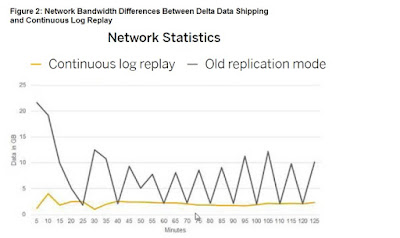Data Centers as the “Power Plants” of the digital Economy
Data centers are the power plants of today’s businesses. However, planning high availability into a system landscape may often be an overlooked aspect by some businesses. As more elements ranging from devices, people, equipment and other systems become increasingly connected, the costs after an unplanned outage is definitely becoming more significant. In the always-on digital economy, companies that rely on data to make decisions, conduct transactions, and interact with consumers cannot afford data center blackouts.
The average cost of network downtime is over $300k/hour, although there is a large degree of variance depending on the business. The cost for a bank, or manufacturing company undergoing downtime would definitely be more due possibly to transactions that could not be executed. What is more important however is that the cost is significantly increasing year-on-year, from an average cost per minute of an unplanned outage from $5,610 in 2010 to $7,908 in 2013 to $8,851 per minute in 2016.
So how much downtime are companies experiencing today on average? 59% of Fortune 500 companies experienced a minimum of 1.6 hours downtime per week. The principal cause for most outages is still UPS systems failure. While such overall unplanned outages including those causes from cooling failures and human error have decreased as processes and equipment becoming more reliable, planned cybercrime is increasingly becoming another cause of data center outages.
The Data Center Readiness Cycle
From SAP’s point of view, managing a data center could be broken down into a lifecycle – planning, building and running phases. Data center readiness begins often in planning, where IT managers should address the stages of installation and update, persistence as well as backup and recovery solutions. In the build phase, IT managers will need to focus on the various high availability options that can be leveraged cost-effectively. Lastly, the run phase includes setting to operation the various disaster recovery, monitoring and security capabilities.
We will cover each of these stages in detail over the next weeks in six different parts, so do refer to the below for the links to each individual blog. We will update the links once the blogs are ready.
Data centers are the power plants of today’s businesses. However, planning high availability into a system landscape may often be an overlooked aspect by some businesses. As more elements ranging from devices, people, equipment and other systems become increasingly connected, the costs after an unplanned outage is definitely becoming more significant. In the always-on digital economy, companies that rely on data to make decisions, conduct transactions, and interact with consumers cannot afford data center blackouts.
The average cost of network downtime is over $300k/hour, although there is a large degree of variance depending on the business. The cost for a bank, or manufacturing company undergoing downtime would definitely be more due possibly to transactions that could not be executed. What is more important however is that the cost is significantly increasing year-on-year, from an average cost per minute of an unplanned outage from $5,610 in 2010 to $7,908 in 2013 to $8,851 per minute in 2016.
So how much downtime are companies experiencing today on average? 59% of Fortune 500 companies experienced a minimum of 1.6 hours downtime per week. The principal cause for most outages is still UPS systems failure. While such overall unplanned outages including those causes from cooling failures and human error have decreased as processes and equipment becoming more reliable, planned cybercrime is increasingly becoming another cause of data center outages.
The Data Center Readiness Cycle
From SAP’s point of view, managing a data center could be broken down into a lifecycle – planning, building and running phases. Data center readiness begins often in planning, where IT managers should address the stages of installation and update, persistence as well as backup and recovery solutions. In the build phase, IT managers will need to focus on the various high availability options that can be leveraged cost-effectively. Lastly, the run phase includes setting to operation the various disaster recovery, monitoring and security capabilities.
We will cover each of these stages in detail over the next weeks in six different parts, so do refer to the below for the links to each individual blog. We will update the links once the blogs are ready.
Leveraging the SAP HANA Platform
Going forward, as IT landscapes become more complex, maintaining uptime will increasingly become a challenge. It is important for IT managers to consider technologies that can help them simplify their landscape and IT architectures, while getting their systems ready for the future.
Aside from combining transaction and analytical workloads and providing real-time performance, SAP HANA also comes provided also with in-built high availability and disaster recovery features. These help to improve the overall enterprise readiness of a business, in a more cost effective way. This is because, while database reliability is essential today to ensure a continuous digital connection to the business network, it can be cost prohibitive for some customers to maintain it.
An example of improving enterprise readiness cost-effectively would be the continuous improvement to the SAP HANA system replication feature. Over the years, the system replication feature has been continuously refined with the customers’ TCO in mind. Starting with Delta data shipping in SPS11 to maintain better concurrency between the Primary and Secondary backup systems, we further introduced continuous log replay features to further improve the recovery-time-objective and also reduce the network bandwidth that may spike during delta data shipments. (see: figure 2).
These options may allow IT managers to better optimize their IT investments towards maintaining readiness in their data center, and free up more budget for innovation. But beyond just budget, SAP also focuses on reducing the “performance cost” for example on the networks, such as the continuous log replay feature above.


No comments:
Post a Comment